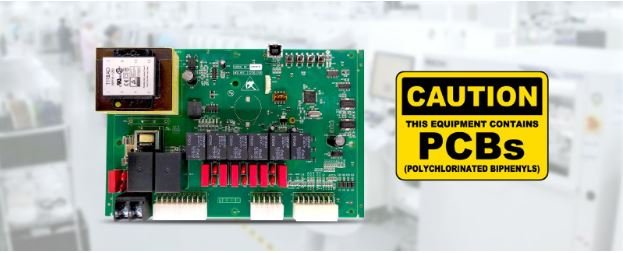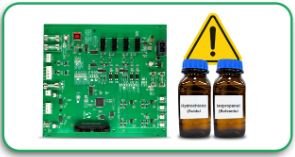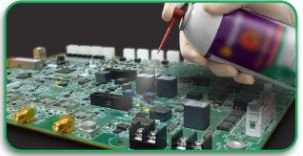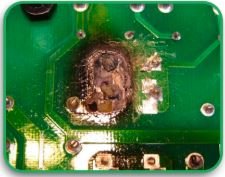The printed circuit board (PCB) industry is indispensable in today’s electronics. It supplies components for everything, from consumer devices to aerospace technology. However, PCB processes can be highly harmful to the people involved in them as well as the environment. Manufacturers need to integrate and comply with PCB safety regulations in every process in order to protect workers and comply with industry waste regulations.
This blog will discuss PCB safety strategies, including chemical handling, employee care, and pollution management, that all aim to resolve the issue of safety in PCB manufacturing.

Why are PCBs Life Safety Important Codes?
PCBs, especially multilayer PCBs, require the use of high-risk materials, high temperatures, and composites. Being an industry worker, you should know that without the proper safety protocols in PCB processes, people can be exposed to and suffer from a multitude of hazardous materials and other risks.
Some striking hazards of PCB Circuit Board Manufacturers include safety lapses such as:
- Exposure to hazardous materials like lead, solvents, and various acids.
- Soldering fume contamination
- Electric shocks during PCB assembly safety requirements
- Destruction and vandalism of PCB waste that is harmful to nature.
In order to mitigate these risks, PCB manufacturers need to follow the best practices in the industry, maintain compliance, enforce strict PCB measures, and train their personnel.
Hazard Risks When Producing a PCB Board
1. Risks from Chemical Exposure
Some of the commonplace processes of PCB fabrication are photolithography, etching, cleaning, and plating. Some types of commercially used PCB hazardous materials include:
- Acids (sulfuric, hydrochloric, nitric)
- Solvents (acetone, isopropanol, trichloroethylene)
- Heavy metals (Lead, Nickel, Copper, Tin)
2. Air Contamination and Exposure
Smoke and vapor created during the soldering process, as well as electronic component assembly, contain toxic elements like Lead, light solder, flux vapors, and aldehyde fumes. If inhaled without ventilation, the above-mentioned substances can create severe respiratory problems and even be life-threatening in the long run.
3. Risk of Electric Shock and Burns
During the PCB assembly stage, personnel work on high-voltage devices, so they have to be well-trained in safety measures for PCB assembly in order to eliminate any risk of being shocked, burned, or malfunctioning the equipment.
4. Waste Generated in PCB Manufacturing
Solid scrap materials, organic solvents, and heavy metal sludge are only some kinds of hazardous waste derived from PCB manufacturing. Water resources and soil are in danger of being polluted due to lack of appropriate disposal techniques of these Filthy materials.
Ways to Ensure Safety Levels For a PCB Board
1. Chemical Safety While Assembling a PCB
Whenever a person attempts to use any hazardous chemicals, there are paramount measures that have to be controlled. For example:
- Keeping chemicals away from sunlight and heat and store them in appropriate ventilated areas.
- Label Box containers accordingly and, at the same time, Store them on shelves when not in use.
Setting PCB chemical safety standards to cut down the amount of exposure of individuals eliminates the need to wear PPE like gloves, goggles, and respirators.
2. Ventilations and Air Quality Management
Via airborne contaminants, PCB circuit board manufacturers can do the following to lower them:
- Fume extraction equipment should be utilized in soldering booths.
- Remove harmful vapor through proper air filtration systems.
- Equip the workers exposed to chemical fume, with breathing aids.
3. Electric Safety Procedures
Electrical safety procedures encompassing the following should be taught to workers doing PCB assembly.
- Use of anti-static wristbands when discharging electrostatic energy (E.S.D).
- Equipment has to be properly bonded to the earth to eliminate shocks.
- Maintenance and minor inspections of the machines should be done for any exposed wires.
4. Personal Protective Clothing (PPC)
Depending on the stage of PCB production processes, the employees should don suitable types of PPC such as:
- Gloves and lab coats where chemicals are being worked on.
- In other places where there are suspected airborne particles, face shields and respirators are used.
- Insulated gloves and anti-static clothing for electrical work.
5. Waste Eliminating And Environmental Protection
PCB manufacturing needs to have environmental safety measures to reduce the destruction of the ecosystem to the lowest possible level. Some of these include:
- Shredding of scrap PCB and other board materials for reuse.
- Abiding with government policies in the safe disposal of chemical waste, such as dumping sites.
- Cleansing products and processes that are harmful to the body should be replaced with less dangerous ones.
6. Preventing Fire And Explosions
Since PCB manufacturers work with fire-risk chemicals, the foremost priority in the workplace must be:
- Keeping chemicals that catch fire in fireproof containers.
- Keeping fire extinguishers within reach in all work zones.
- Train workers on emergency fire procedures.
7. Worker Training and Awareness
This is specifically for maintaining PCB manufacturing safety tips for employee training:
- Always conduct your safety drills.
- Educate us on hazardous materials and how to handle them.
- Communicate safety measures in simple languages if required.
8. Regulatory Compliance and Certificates
Compliance with industry requirements assists in PCB circuit board manufacturing. As examples, some key standards include:
- OSHA (Occupational Safety and Health Administration) regulations
- RoHS (Restriction of Hazardous Substances) compliance for toxic materials disposal
- ISO 14001 for ecological management of PCB fabrication.
The Future of PCB Safety
As the technology of PCB fabrication develops over the years, it’s important to note that safety also develops along with it. Following are some innovations and areas for improvement to work on in PCB safety protocols.
Lead-free soldering to eliminate possible health issues.
Automated handling systems for exposure of humans to PCBS-consuming materials.
Eco-friendly chemicals for the etching and plating processes.
Due to growing governmental restrictions on the environment, some of the dominant ones that do PCB must keep improving their practices while making sure that the safety standards are met.
Conclusion
Enhancement of worker welfare with regards to PCB manufacturing must always be on top of the list for concerns to eliminate suffering at the peak levels, mitigate environmental concerns while increasing the manufacture follow to electronic PCB devices, and, in the end, decide on the overall impact to the modern world. In order to make such a decision, PCB manufacturers will have to come up with relevant policies and control them, which is why it’s essential to assemble safety guidelines to eliminate any risks; implementation of ensuring chemical safety regulations step through the firm borders of a workstation.
Having standard processes in place increases productivity, keeps any risks at a minimum, and helps in adhering to rules and regulations. Sustainability in assembling PCBs is vital for longer business viability in the current trend of industries adopting green practices.
Need a Safe and Reliable PCB Manufacturer?
With PCB Runners, you can get multilayer PCBs without compromising on safety and reliability. We make sure we put sustainability and productivity at the core of our PCB manufacturing procedures. Reach out to us to get a free quote for your PCB projects today!
Frequently Asked Questions (FAQs)
Why is PCB safety important?
Effective prevention of PCB harm protects the employee’s safety, mitigates the risks of ecological disasters, and fulfills industry norms and legislation standards.
What are the main hazards in PCB manufacturing processes?
Some key hazards include chemicals, dust or harmful gases, energizing parts, and insufficient methods to treat waste materials.
How can manufacturers of PCBs increase safety in the workplace?
Safety can be improved by implementing chemical ventilation systems, pollutant masks, and goggles and undertaking other measures to ensure the environment is clean.
What environmental safety methods can PCB manufacturers comply with?
The use of non-polluting substances for PCB etching, proper disposing of PCB waste materials, and employing reasonable standards in protecting environments are significant environmental safety methods.
How can I select a PCB manufacturer that is credible and affordable?
Choose a manufacturer who places emphasis on environmental sustainability and has industry certifications as they demonstrate effective safety protocols.




